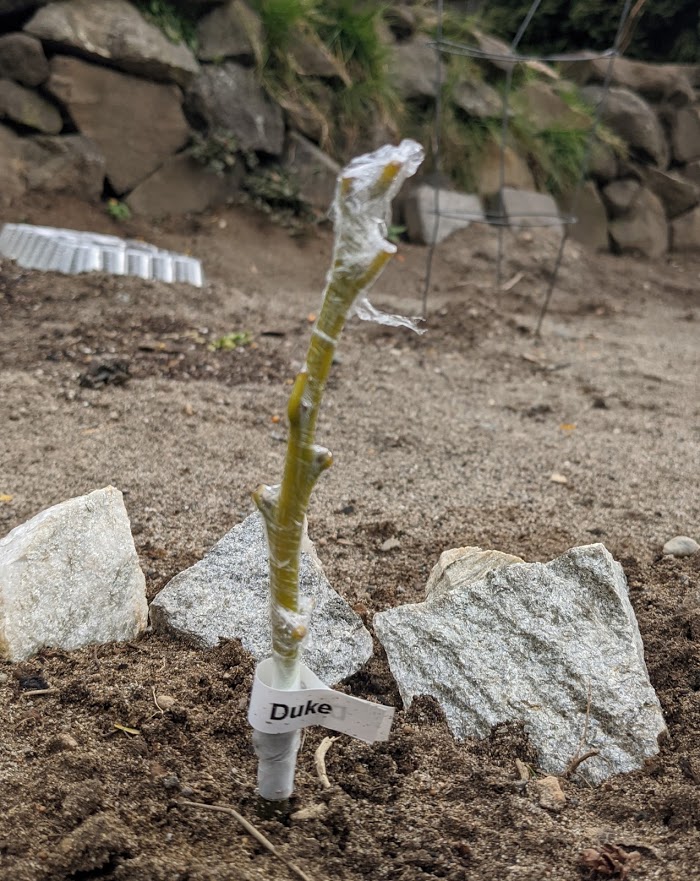Here’s more of an update on the avocados I’m currently growing. A family photo album of sorts?
Grafted varieties
First off, some success stories from my first attempts at grafting avocados.
Joey on grocery store Hass seedling rootstock (pushing a flower bud, but looks like it’s taking):
Aravaipa on the Choquette frankentree:
Royal-Wright, also on the Choquette frankentree (and also pushing a flower bud but appears to be taking):
Sadly, it appears that Lila, Fantastic, and the other Joey graft all failed, and Brogdon is likely failing as well though it still looks somewhat green.
As a new addition, I grafted three scions of Duke this week, one onto the Choquette frankentree, one onto the Brazos Belle frankentree, and one onto some Hass seedling rootstock that I planted out in the yard just for kicks. I’ve never seen an avocado with such a yellowish looking color to its stems, but that is what I’ve heard about Duke so I will assume they are healthy scions. Here’s the one in the yard:
I have four main “frankentrees,” each frameworked on an already-grafted variety that I bought at 5-gal nursery pot size last year, all on Lula rootstock, and currently in 12-15 gal pots indoors. These are the grafted varieties that are forming the framework for the frankentrees:
- Choquette (not hardy)
- Winter Mexican (not very hardy)
- Poncho (hardy)
- Brazos Belle (hardy)
The latter two I intend to eventually plant out, but only when they outgrow my greenhouse. I’m hoping to keep the Choquette and Winter Mexican trees pruned to fit in the greenhouse, and will be continually adding and removing varieties depending on what does better outside. Here are the Poncho and Brazos Belle trees (didn’t take photos of the other two, which are ugly now with lots of grafts on them anyhow):
Seedlings
I’ve got quite a few batches of seeds currently germinating, either to test for hardiness themselves (Mexicola, Mexicola Grande, Bacon, Royal-Wright, alleged Fantastic and Del Rio from Etsy), or for greenhouse/rootstock use only (Sharwil).
The germination technique that I’ve settled on is based loosely on the one described in the pamphlet Propagating Avocados, where the seeds are placed in moist native soil in tight rows and observed for germination, after which they are transferred into nursery pots. Instead, I use take-out containers with damp soil on heating pads:
Then, as the taproot emerges, I move them into their own pots. Here are some freshly potted up:
Most of the seedlings are still inside under lights, like this Mexicola Grande:
And here I’ll finish with a photo of the strangest little seedling of them all – a Mexicola seedling that had the smallest seed I’ve seen yet, and is now producing a tree with the smallest leaves I’ve ever seen for an avocado:
It is currently not in great soil (too much native soil in the mix), so hopefully it holds out nicely until I can re-pot it in the greenhouse in a month or so. So far at least, no real signs of any problems other than its small size and very small leaves.
OK, that’s all folks! Hopefully my next update can be when the greenhouse is built and the plants start moving in.






























 ” I have to make do with a grow light and a tiny room below my basement steps like Harry Potter right now haha.
” I have to make do with a grow light and a tiny room below my basement steps like Harry Potter right now haha.